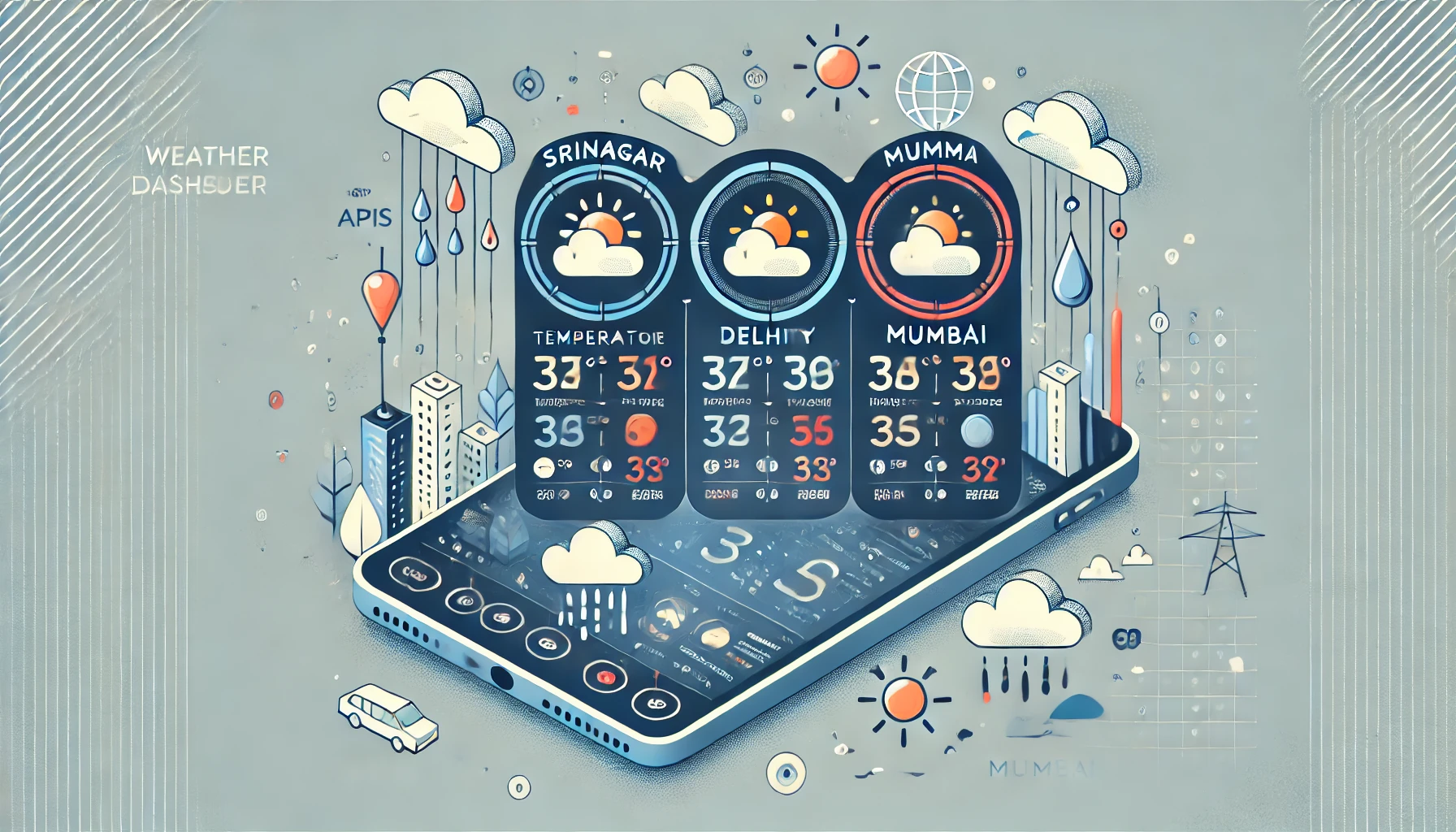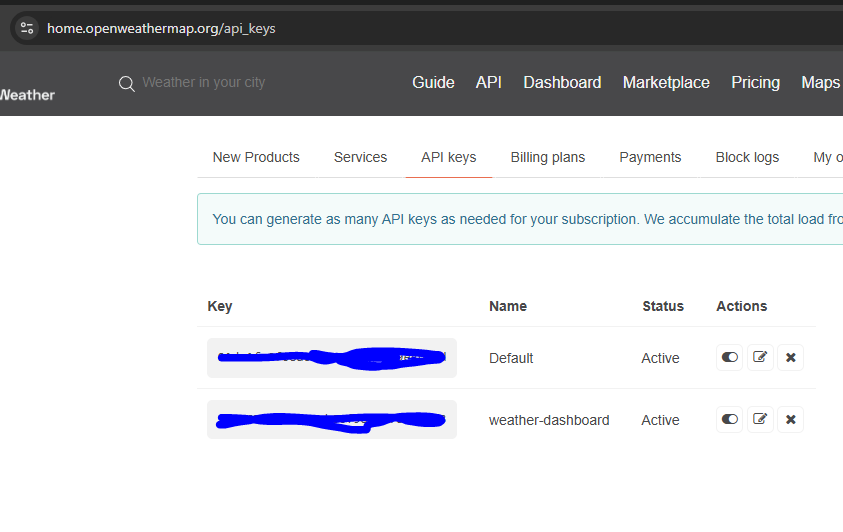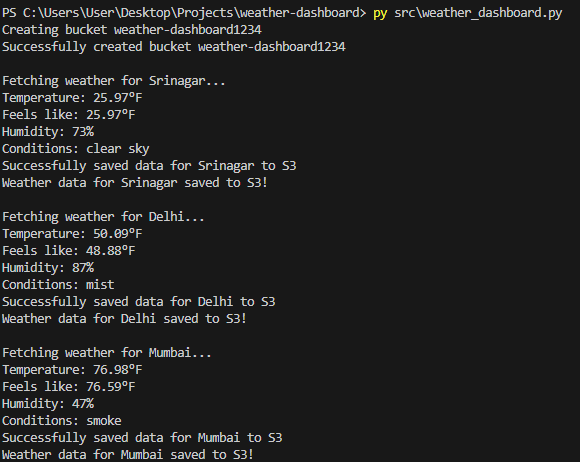Building a Weather Dashboard: Fetch and Store Real-Time Weather Data with Python, OpenWeather API, and AWS S3
 Faizan Mehraj
Faizan Mehraj
Building projects that integrate APIs and cloud services offers invaluable hands-on experience with real-world applications. In this article, I’ll guide you through my Weather Dashboard project—a Python-based application designed to fetch real-time weather data for multiple cities using the OpenWeather API and securely store it in AWS S3 for seamless data management.
You can find the complete project on GitHub: Weather Dashboard
Purpose
Gain hands-on experience and join the #DevOpsAllStarsChallenge, an initiative hosted by Cloud Engineers and DevOps professionals dedicated to helping others get involved in the field. It's a vibrant and supportive community, and I highly recommend exploring the Discord channel if you're interested in learning more!
🌟 Project Overview
The Weather Dashboard is a Python-based CLI tool designed to:
Fetch real-time weather data for predefined cities.
Display temperature, humidity, and weather conditions in the terminal.
Save weather data as JSON files to an AWS S3 bucket for storage and analysis.
Prerequisites
Python 3.x installed on your system.
An AWS account with an IAM user account with IAMFullAccess privileges.
An OpenWeather API account and your API key.
The project highlights the use of:
Python for scripting.
Boto3 for interacting with AWS S3.
OpenWeather API for fetching weather data.
🚀 Features
Fetches real-time weather data for cities like Srinagar, Delhi, and Mumbai.
Displays weather details, including temperature, humidity, and conditions.
Stores the fetched data in an S3 bucket for later use.
Handles errors gracefully, such as API key issues or connectivity problems.
Create an API key in OpenWeather
Create an account with OpenWeather, select "API Keys" and generate an API key. This will be used later in the .env file within the Git repo.

Create an IAM user in AWS, assign a group, permissions and generate an Access Key
For further explanation, please reference the AWS IAM user documentation.
I have created the user "weather-dashboard-user", and added the policy of "AmazonS3FullAccess" and “AmazonIAMFullAcces”. This gives the user the necessary permissions to create an S3 bucket.
Weather Dashboard Setup and Launch
Clone the Repository
git clone https://github.com/DarFaizan18/weather-dashboard.git
cd weather-dashboard
Install Dependencies Use pip to install the required Python packages:
pip install -r src/requirements.txt
Configure Environment Variables Create a .env file in the src/ directory and add the following:
OPENWEATHER_API_KEY=your_openweather_api_key
AWS_BUCKET_NAME=your_s3_bucket_name
💻 Usage
Once set up, run the script to fetch weather data:
python src/weather_dashboard.py
Here’s what the program does:
Checks if the S3 bucket exists: Creates one if it doesn't.
Fetches weather data: Pulls data for cities like Srinagar, Delhi, and Mumbai using the OpenWeather API.
Displays data: Outputs temperature, humidity, and weather descriptions in the terminal.
Saves to AWS S3: Uploads JSON files with weather data to your S3 bucket.
Example Output
Terminal output:


🛠️ Technologies Used
Python: Core language for scripting.
Boto3: AWS SDK for Python to interact with S3.
OpenWeather API: Source of real-time weather data.
AWS S3: Cloud storage for saving weather data.
AWS CLI: Used to connect with the AWS account
Dotenv: To manage environment variables securely.
Conclusion
This article showcased a foundational example of building a weather dashboard using Python, AWS S3, and the OpenWeather API.
I hope this article serves as a valuable starting point for your weather dashboard project.
Subscribe to my newsletter
Read articles from Faizan Mehraj directly inside your inbox. Subscribe to the newsletter, and don't miss out.
Written by

Faizan Mehraj
Faizan Mehraj
Experienced professional with a proven track record of providing exceptional technical support and guidance for cloud-hosted solutions. Specialized in responding to complex inquiries and ensuring optimal performance of cloud-based systems, I have successfully collaborated with cross-functional teams to troubleshoot issues and maintain high levels of customer satisfaction. My expertise extends to maintaining strong B2B customer relationships, monitoring solutions, and adhering to service level agreements (SLAs) with meticulous attention to detail. Adept at fostering open and trusting work environments, I have excelled in various roles, including monitoring, providing service desk support, and training new employees. Committed to continuous improvement and adherence to best practices, I contribute to documentation efforts and ensure compliance with industry standards and policies. My proactive problem-solving approach and effective communication skills have driven success in dynamic and challenging environments.